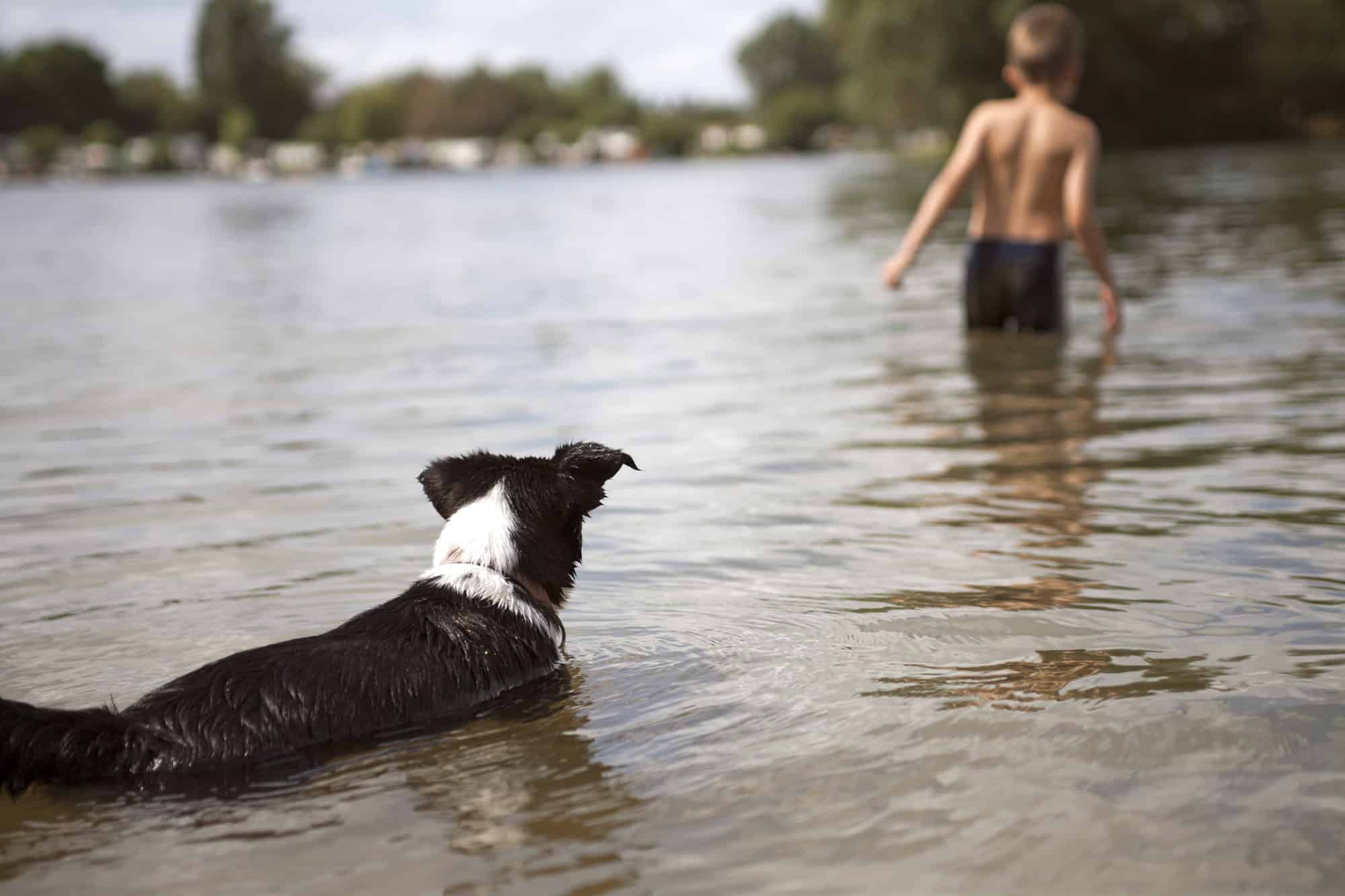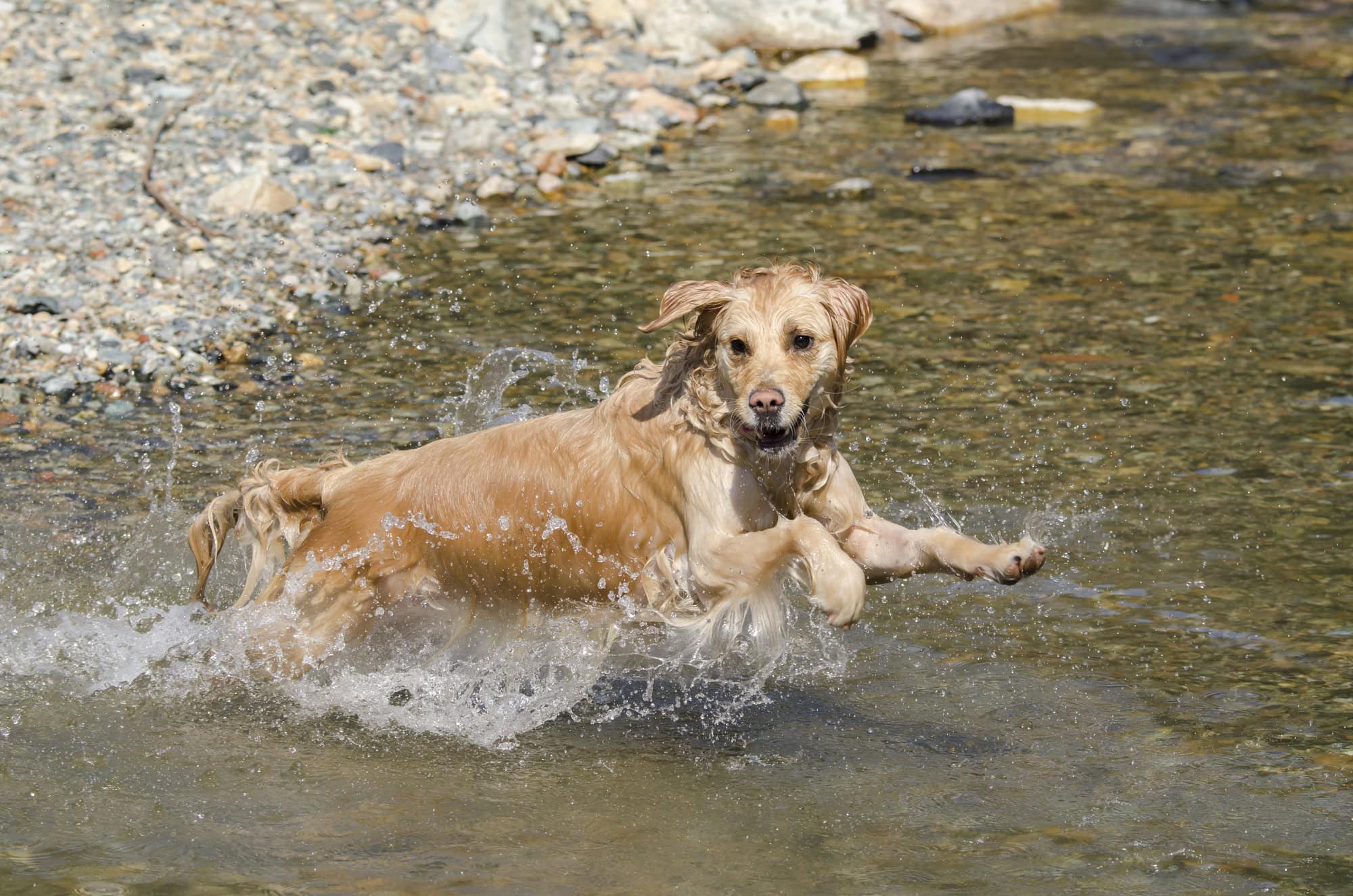It’s the most wonderful time of the year – summer! Your holiday is probably jam-packed with outdoor adventures with your favorite adventure buddy: your doggo. That being said, in summer there are many health issues that your dog might suffer from – here’s how to prevent the most common ones so that you can make sure your trip goes according to plan.
1. Heatstroke

Heatstroke occurs when a dog’s body temperature rises to dangerous levels. Naturally, this is something to be more weary of in states with high summer temperatures like Arizona and Texas. Symptoms include heavy panting, drooling, and lethargy. The best way to prevent your dog from suffering from one is by keeping them indoors during peak heat hours and providing plenty of water and shade.
2. Dehydration

Dehydration can happen quickly during hot weather, especially in states like Florida and California. While similar to heatstroke, dehydration is a little different – its symptoms include dry gums, excessive panting, and loss of appetite. Ensure your dog always has access to fresh water and avoid strenuous exercise during the hottest parts of the day.
3. Paw Pad Problems

Hot pavement can burn your dog’s paw pads, leading to pain and infection. On a 90°F day, the asphalt will reach temperatures of up to 150°F. States with high temperatures, like Nevada and Arizona, are particularly risky. Walk your dog during cooler times of the day and consider using protective booties to safeguard their paws.
4. Flea and Tick Trouble

Fleas and ticks thrive in warm weather, posing a significant threat in states like Georgia and North Carolina. These pests can cause itching, allergies, and transmit diseases. Use veterinarian-approved flea and tick preventatives and check your dog regularly for signs of infestation.
5. Sunburn

If you’ve spent a whole day at the beach without SPF, you know how painful a sunburn can be. This common summer-ailment doesn’t only affect humans; dogs, especially those with short or light-colored fur, can also get sunburned. Protect your dog by applying pet-safe sunscreen to exposed areas and providing shaded areas for them to rest.
6. Ear Infections

Swimming in lakes, pools, and oceans is fun but can lead to ear infections, particularly in humid states like Louisiana and Florida. Prevent ear infections by thoroughly drying your dog’s ears after swimming and using ear-cleaning solutions recommended by your vet.
7. Allergies

Summer allergens such as pollen and grass can trigger allergies in dogs. States with high pollen counts, like New Jersey and Pennsylvania, can be problematic. Signs include itching, sneezing, and red eyes. Regular grooming and vet-prescribed allergy medications can help manage symptoms.
8. Hot Spot Hazards

Hot spots are painful, inflamed skin lesions that can develop rapidly in hot, humid weather. States like Alabama and Mississippi are prone to these conditions. Keep your dog’s skin healthy by regularly grooming, preventing flea infestations, and ensuring they stay dry and cool.
9. Waterborne Worries

Swimming in contaminated water can expose dogs to harmful bacteria and parasites, causing gastrointestinal issues. This is a concern in states with many lakes and rivers, like Minnesota and Wisconsin. Prevent this by keeping your dog from drinking or swimming in stagnant or unknown waters (even though this might be hard, as dogs seemingly love nothing more than a gross puddle of water – no matter how fresh their own water bowl is.)
10. Snakebites

Summer is snake season, and curious dogs are at risk of snakebites, especially in states like Texas and Arizona. Keep dogs on a leash during hikes and avoid areas known to have snakes. Learn to recognize the symptoms of a snakebite and seek immediate veterinary care if needed.
11. Blue-Green Algae Alert

Blue-green algae in ponds and lakes can be toxic to dogs, causing severe illness or death. This is particularly problematic in states like Florida and Ohio. Prevent exposure by avoiding water with visible algae blooms and rinsing your dog thoroughly after swimming in any natural water body.
Conclusion

Summers are made for lots of adventures outside, adventures which are made even better with a furry companion at your side. With these tips, you’ll hopefully be able to stay one step ahead and avoid emergency trips to the vet this summer.
Thank you for reading this post about common health issues your dog might face during the summer holidays!
- The Most Remarkable Animal Mating Rituals - August 15, 2025
- 16 Most Endangered Animals in the Bahamas - August 15, 2025
- Watch: Mama Elephant Stops Stubborn Baby From Getting Into Safari Jeep - August 15, 2025

